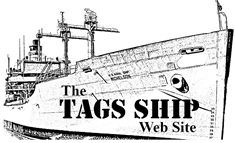Processes Used to Produce Ship's Newspapers
Posted on 2/08/2010
I remember the early document reproduction methods used for our ship's newspapers quite well. Here are my recollections about the processes described by Bob Lord.
Mimeograph Copies:
The process described here is not Mimeograph; what is described is the spirit duplicator or more commonly the Ditto machine or simply Dittos. The comment Bob made about the smell indicates that this was the Ditto process. Mimeograph smelled quite rotten. Usually the ink used for Mimeograph was black while Ditto was usually purple or bluish.
The Dreaded New Process:
The machine described is an Ozalid machine. The Bowditch and Michelson each had one and I am sure the Dutton had one as well. This machine used the Diazo printing process. Colors produced were Blue, Black and Sepia (a brownish hue). When this machine was in use there was a strong odor of ammonia, which is used to develop the image.
Some of the early Michelson newspapers were produced on photographic paper. Print copy and photos were pasted onto white cardboard and were photographed. A negative was created from which prints were produced. The prints were on photographic paper and were processed as black and white prints then assembled into the newspaper. There was a special camera in the photo lab for shooting large format film and short focal length.
Take a look at the Michelson ship's newspaper page and specifically the following:
Midnight Skulker 1971 - Ditto
Lone Dijobe 23 May 1971 - Mimeo
OcUnit3 Newspaper Jan-Feb 1972 - Photographic paper
Some of the 8.5 x 11 newspapers with the blue print look like Ditto and are not Mimeograph.
Bowditch:
The "No Slack" - Ozalid / Diazo
The Red Hook Rag May 5, 1975 - Front cover - Ozalid / Diazo
Acquiring My Extreme Foul Weather Jacket and Keeping It
Posted on 5/18/2010
If you read
my article on the Michelson’s trip through the Panama Canal and her subsequent visit to the shipyard in Oakland California, you know the first part of the story.
I do not know the precise reason for her shipyard / dry-dock visit in Oakland. My best guess is that since the Mike had last been in dry-dock early in 1963, and it was now late 1964, it was time for her annual yard-period. Maintenance of the ship’s bottom and Sonar Array domes necessitated dry-docking; installation of new washing machines in the crew laundry and other maintenance tasks were accomplished in preparation for our upcoming Far-East operations. (Go here for my story about the washing machines.)
We spent two or three weeks in the Willamette Iron and Steel Works dry-dock before moving to the Oakland Army Terminal for provisioning. Our scheduled stay at the terminal was about four days, which was during late October or early November 1964. On the morning of our scheduled departure, all hell broke loose; fire alarms sounded and there was a call to GQ. As it turned out a fire (sort of) had broken out in cargo hold four; it is the hold immediately aft of the superstructure.
The fire turned out to be mostly smoke caused by chlorine bleach leaking into boxes of dry laundry detergent. The ship’s crew and Army Terminal Fire Department personnel sprayed a large quantity of water into the hold and onto the source of the smoke.
Once the threat of fire was eliminated, a cleanup operation commenced. Everything in the cargo hold that had received a drop of water was removed and tossed into dumpsters. Fortunately, I was there “supervising” the removal of the “damaged” goods. As wet boxes came out of the cargo hold, I noticed new Extreme Foul Weather Jackets in boxes that were barely wet. I asked the real supervisor what they were going to do with them. He said they were being scrapped. I asked if I could have one and he said, “Take all you want before we haul them away.” I grabbed two jackets, depositing one in my room and the other I gave to our OIC, LCDR Guy Trotter. I then spread the word that new foul weather jackets were available for the taking. Everyone scrambled to the area where they were dumping them, grabbing themselves a new jacket.
Our departure from Oakland was delayed about three days. When we finally sailed for Japan, each of the Ocdet Navy crew had a new Extreme Foul Weather Jacket. Before we were underway, I packed my jacket in a box so I could ship it home once we arrived in Yokosuka. Upon arrival, I took the box to the Navy Exchange and mailed it.
Eventually, we had a change of command, which meant a new face and new rules. One of those rules, not well received by the Navy crew, was that each Ocdet crewmember that had a jacket had to turn it in to the storekeeper for inventorying, numbering and subsequent checkout back to the crewmember. Since I did not have one, technically speaking, I did not have to turn one in. From that point on, the jackets became the official property of the Ocdet; when an Ocdet crewmember transferred off the Michelson, he had to return his jacket to the storekeeper. I believe LCDR Trotter and I were the only two who managed to retain custody of “our” jackets.
As you can see from the photos, my jacket is almost like new. I wore it when I had a service station, getting it filthy from grease and grime while working on cars, trucks and anything else with wheels. Eventually I had it dry cleaned; to my surprise all stains vanished and the jacket looked new again, as it does to this day, albeit almost 46 years after the fact.
